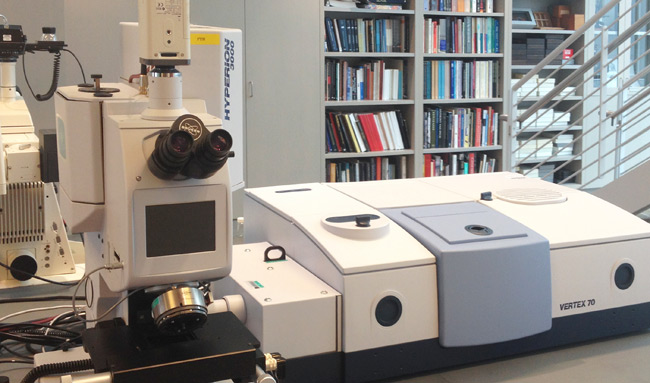As a conservation science fellow at the Straus Center for Conservation and Technical Studies, I am in the enviable position of having access to highly advanced equipment for analyzing objects. Probably the most significant tool I have at my disposal is the Fourier transform infrared spectrometer, otherwise known as the FTIR.
FTIR is the first port of call for the analysis of any microscopic sample taken from an object. What makes this tool so valuable is that it offers an extremely simple and efficient way to begin to identify the type of material present in each sample. It can detect synthetic materials such as polymers, natural resins, drying oils, gums, waxes, proteins, and both organic (carbon-containing) and inorganic (metal-containing) pigments, and more. This information then helps determine the next steps: will our further examinations involve Raman spectroscopy or x-ray fluorescence? Pyrolysis gas chromatography mass spectrometry, microfadeometry, or the MALDI?
In the analytical lab, we frequently use FTIR on samples such as scrapings of varnish or small chips of paint. We first press a sample flat onto a diamond cell and shine a beam of infrared light onto the sample. Some of this light passes through the sample and some is absorbed. The infrared light absorbed by the sample causes the molecules within the material to vibrate. The vibration that occurs is unique to the sample under investigation, as no two materials have the exact same building blocks; or more precisely, the same combination of atoms and chemical bonds that form the molecules. These vibrations are recorded by the machine and displayed as a spectrum. The recorded spectrum can be compared to spectra of known materials (reference spectra) or the peaks can be examined individually to determine what molecular vibration created that specific peak. After analysis, the sample can be recovered from the diamond cell and used for further investigation in another of the tools available in the analytical lab.
Georgina Rayner is the Andrew W. Mellon Postdoctoral Fellow in Conservation Science at the Harvard Art Museums.

